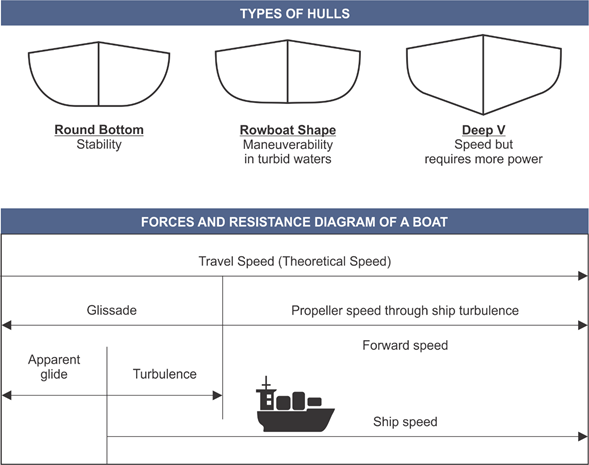|
One of the most important aspects when designing a propulsion system is knowing the dimensions and characteristics of the hull. The hull is the outer wrapper of the ship
and its design is one of the three parameters of naval architecture on which the entire function of the ship in operation depends. This will define factors of advance,
displacement and all hydrodynamic interactions related to the performance and maneuverability of the ship.
Hydrodynamics is one of the divisions of dynamics that studies the movement of liquids in relation to the causes of that movement. In the naval field, the interaction of
the ship's hull with the water it displaces is studied. The principles of this division of dynamics are described by mathematical equations such as Torricelli's Law,
Reynolds Number, flow rate and Bernoulli's Principle, among others.
The design ensures that it fulfills 3 functions:
- The water tightness of the vessel at the bottom: this allows the vessel to float.
- Rigidity: it preserves the dimensions and characteristics of the ship, avoiding deformations due to navigational efforts.
- Displacement efficiency: it must have a shape that ensures the most efficient way to move from one point to another through the water, in relation to your objective.

In practice there is a factor of loss of efficiency in the transmission of energy (approximately 2.5% to 5%), but without considering this, the power is used for the
following factors:
Rotate the propeller.
Overcome resistance to waves.
Overcome hull friction.
Overcome turbulence resistance.
Overcome air resistance.
The design of the hull will depend on the type of boat and the function that it will have. Naval architecture will also have to meet certain design specifications:
Be able to carry a certain load.
Be able to make a certain trip in a given time.
Respect manufacturing budgets and data manipulation.
Comply with current regulations.
Resistance to normal and accidental operating conditions.

|